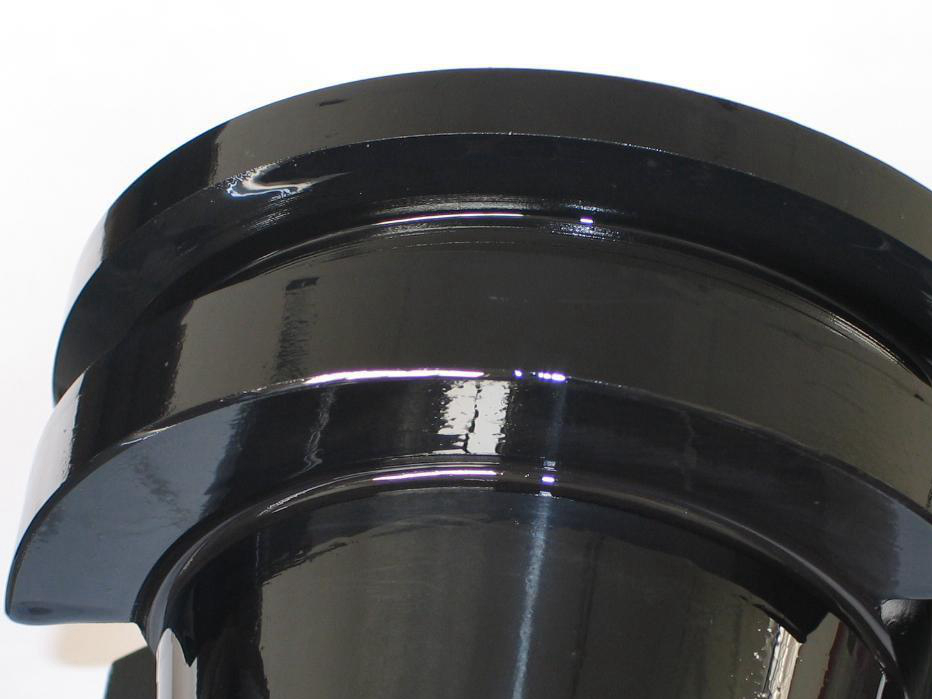Black Oxide Coating: A Stylish and Protective Finish for Steel Alloy CNC Parts
Introduction
The black oxide coating is a popular surface treatment for steel alloy CNC machined components. The process chemically converts the metal surface into a durable, black oxide layer (typically 0.5–2 µm thick), significantly enhancing corrosion resistance, reducing light reflection, and improving aesthetic appearance. Its sleek, matte black finish adds visual appeal and professional style to precision-engineered parts.
Ideal for industries such as automotive, industrial equipment, and firearms manufacturing, black oxide treatment maintains tight CNC machining tolerances and effectively coats intricate geometries, fine threads, and complex surface features without altering component dimensions.
Black Oxide Technology: Enhancing Protection and Appearance of CNC Components
Scientific Principles & Industrial Standards
Definition: Black oxide coating involves immersing steel alloys in alkaline solutions at elevated temperatures (135–150°C), resulting in a controlled chemical reaction forming a thin, uniform iron oxide layer approximately 0.5–2 µm thick on the surface.
Governing Standards:
MIL-DTL-13924: Military specification for black oxide coatings on iron and steel
ASTM D769: Specification for black oxide coatings on ferrous metals
AMS 2485: Aerospace specification for black oxide coatings
Process Function and Cases
Performance Dimension | Technical Parameters | Application Cases |
|---|---|---|
Corrosion Resistance | - Salt spray resistance: 100–200 hours (ASTM B117) - Thickness: 0.5–2 µm oxide layer | Automotive fasteners, Industrial tooling, Machinery components |
Surface Appearance | - Uniform matte black finish - Reflectivity reduction ≥90% | Firearm components, Optical mounts, Camera parts |
Dimensional Stability | - Negligible dimensional change (<0.25 µm) | Precision gears, CNC threaded fittings, Aerospace connectors |
Wear Resistance | - Improved surface lubrication capability - Reduction in galling and friction | Mechanical pivots, Bearing surfaces, Industrial shafts |
Black Oxide Process Classification
Technical Specification Matrix
Black Oxide Method | Key Parameters & Metrics | Advantages | Limitations |
|---|---|---|---|
Hot Black Oxide | - Temperature: 135–150°C - Bath: Sodium hydroxide, nitrates, nitrites - Time: 10–45 min | - Durable coating - Economical for batch processing - Excellent uniformity | - High energy consumption - Hazardous chemicals |
Cold Black Oxide | - Room temperature processing - Phosphoric and selenium-based solutions | - Easy, safer handling - Suitable for small-scale applications | - Lower durability and corrosion resistance |
Mid-Temperature Black Oxide | - Temperature: 90–110°C - Modified alkaline bath | - Balance between hot and cold processes - Good corrosion protection | - Moderate coating uniformity |
Electrochemical Black Oxide | - Voltage: 2–6 V DC - Electrolytic bath solutions | - Precise thickness control - Environmentally friendly | - Complex equipment setup |
Selection Criteria & Optimization Guidelines
Hot Black Oxide
Selection Criteria: Preferred method for durable, uniform coatings on high-volume CNC steel components requiring reliable corrosion resistance and improved aesthetics.
Optimization Guidelines:
Maintain bath temperature consistently between 140–145°C
Regularly test bath chemistry to maintain oxide uniformity
Post-process oil sealing to maximize corrosion resistance
Cold Black Oxide
Selection Criteria: Suitable for low-volume applications or field treatments requiring easy handling and rapid processing with minimal equipment investment.
Optimization Guidelines:
Thorough cleaning to ensure consistent coating adherence
Limit applications to indoor or low corrosion-risk environments
Apply sealants post-treatment to enhance corrosion resistance
Mid-Temperature Black Oxide
Selection Criteria: Optimal for applications balancing cost, environmental impact, and coating durability, commonly used for moderate-scale production.
Optimization Guidelines:
Precise temperature control around 100°C
Ensure rigorous surface preparation for consistent coating
Use supplemental sealing processes for improved durability
Electrochemical Black Oxide
Selection Criteria: Best for precision CNC parts demanding exact coating thickness control and environmentally friendly processing conditions.
Optimization Guidelines:
Accurately regulate applied voltage and bath chemistry
Regularly monitor electrolyte conditions for uniform coating
Rinse thoroughly to prevent surface contamination
Material-Coating Compatibility Chart
Substrate | Recommended Black Oxide Method | Performance Gain | Industrial Validation Data |
|---|---|---|---|
Hot Black Oxide | Enhanced corrosion resistance | Passed 200-hour salt spray validation (ASTM B117) | |
Hot Black Oxide | Improved wear resistance & Appearance | Industrial tooling validated for heavy-duty operations | |
Cold Black Oxide | Fast and economical finish | Validated for indoor precision hardware applications | |
Mid-Temperature Black Oxide | Balanced durability and cost efficiency | Automotive and aerospace fittings certified for performance | |
Electrochemical Black Oxide | Precise coating thickness control | Industrial machine components certified for consistent appearance |
Black Oxide Process Control: Critical Steps & Standards
Pre-Treatment Essentials
Surface Cleaning: Alkaline degreasing baths at 50–70°C Validation: Water-break test (ASTM F22)
Surface Activation: Acid pickling or mechanical blasting for oxide uniformity Validation: Surface roughness measurement (Ra 0.4–0.8 µm)
Black Oxide Process Controls
Bath Composition: Regular monitoring and chemical replenishment ±2% Validation: Titration and concentration testing
Temperature Control: Automated temperature regulation ±2°C Validation: Continuous monitoring and digital logging
Post-Coating Enhancement
Oil or Wax Sealing: Corrosion inhibitors applied post-process Validation: Salt spray testing (ASTM B117)
Quality Inspection: Visual uniformity inspection and thickness testing Validation: Coating thickness measurement (ASTM D7091)
FAQs
How durable is black oxide compared to other coatings like zinc plating?
Does black oxide coating significantly change component dimensions?
Is black oxide coating environmentally friendly?
What is the typical lifespan of black oxide coatings in outdoor environments?
Can black oxide be effectively applied to components with fine-threaded features?

